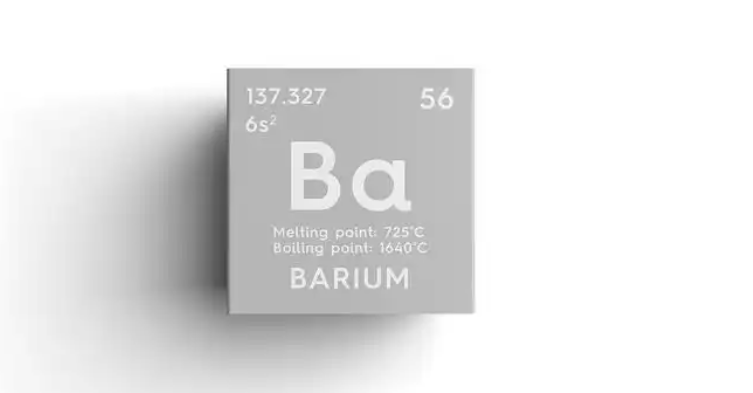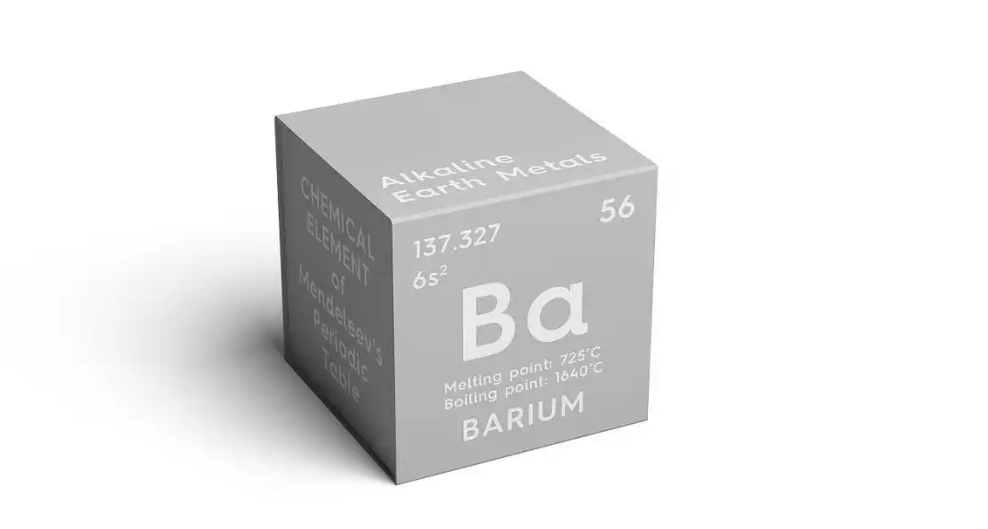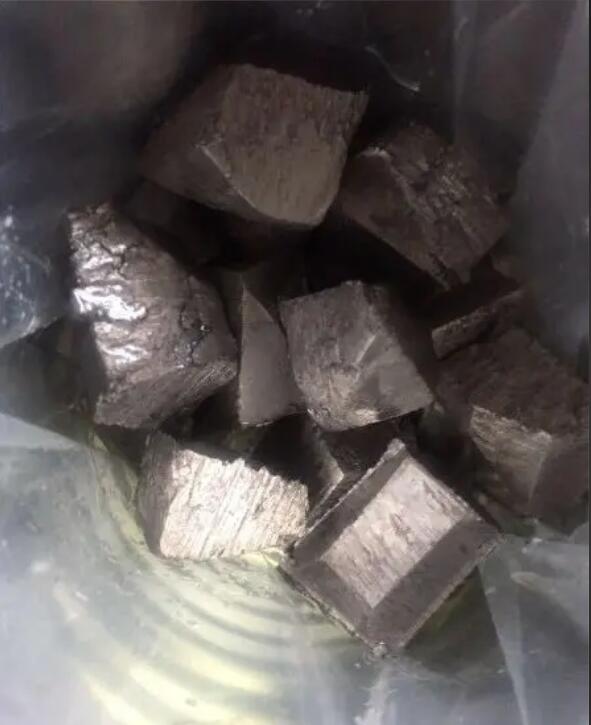In the magical world of chemistry, barium has always attracted the attention of scientists with its unique charm and wide application. Although this silvery-white metal element is not as dazzling as gold or silver, it plays an indispensable role in many fields. From precision instruments in scientific research laboratories to key raw materials in industrial production to diagnostic reagents in the medical field, barium has written the legend of chemistry with its unique properties and functions.
As early as 1602, Cassio Lauro, a shoemaker in the Italian city of Porra, roasted a barite containing barium sulfate with a combustible substance in an experiment and was surprised to find that it could glow in the dark. This discovery aroused great interest among scholars at the time, and the stone was named Porra stone and became the focus of research by European chemists.
However, it was the Swedish chemist Scheele who truly confirmed that barium was a new element. He discovered barium oxide in 1774 and called it "Baryta" (heavy earth). He studied this substance in depth and believed that it was composed of a new earth (oxide) combined with sulfuric acid. Two years later, he successfully heated the nitrate of this new soil and obtained pure oxide.However, although Scheele discovered the oxide of barium, it was not until 1808 that the British chemist Davy successfully produced metallic barium by electrolyzing an electrolyte made from barite. This discovery marked the official confirmation of barium as a metallic element, and also opened the journey of the application of barium in various fields.
Since then, human beings have continuously deepened their understanding of barium. Scientists have explored the mysteries of nature and promoted the progress of science and technology by studying the properties and behaviors of barium. The application of barium in scientific research, industry, and medical fields has also become increasingly extensive, bringing convenience and comfort to human life.
The charm of barium lies not only in its practicality, but also in the scientific mystery behind it. Scientists have continuously explored the mysteries of nature and promoted the progress of science and technology by studying the properties and behaviors of barium. At the same time, barium is also quietly playing a role in our daily lives, bringing convenience and comfort to our lives. Let’s embark on this magical journey of exploring barium, unveil its mysterious veil, and appreciate its unique charm. In the following article, we will comprehensively introduce the properties and applications of barium, as well as its important role in scientific research, industry, and medicine. I believe that by reading this article, you will have a deeper understanding of barium.
1. Application of Barium
Barium is a common chemical element. It is a silvery-white metal that exists in nature in the form of a variety of minerals. The following are some daily uses of barium.
Burning and glowing: Barium is a highly reactive metal that produces a bright flame when in contact with ammonia or oxygen. This makes barium widely used in industries such as fireworks, flares, and phosphor manufacturing.
Medical industry: Barium compounds are also widely used in the medical industry. Barium meals (such as barium tablets) are used in gastrointestinal X-ray examinations to help doctors observe the workings of the digestive system. Barium compounds are also used in certain radioactive therapies, such as radioactive iodine for the treatment of thyroid disease.
Glass and ceramics: Barium compounds are often used in glass and ceramic manufacturing because of their good melting point and corrosion resistance. Barium compounds can enhance the hardness and strength of ceramics and can provide some special properties of ceramics, such as electrical insulation and high refractive index. Metal alloys: Barium can form alloys with other metal elements, and these alloys have some unique properties. For example, barium alloys can increase the melting point of aluminum and magnesium alloys, making them easier to process and cast. In addition, barium alloys with magnetic properties are also used to make battery plates and magnetic materials.
Barium is a chemical element with the chemical symbol Ba and atomic number 56. Barium is an alkaline earth metal and is located in Group 6 of the periodic table, the main group elements.
2. Barium Physical Properties
Barium (Ba) is an alkaline earth metal element
1. Appearance: Barium is a soft, silvery-white metal with a distinct metallic luster when cut.
2. Density: Barium has a relatively high density of about 3.5 g/cm³. It is one of the denser metals on earth.
3. Melting and boiling points: Barium has a melting point of about 727°C and a boiling point of about 1897°C.
4. Hardness: Barium is a relatively soft metal with a Mohs hardness of about 1.25 at 20 degrees Celsius.
5. Conductivity: Barium is a good conductor of electricity with a high electrical conductivity.
6. Ductility: Although barium is a soft metal, it has a certain degree of ductility and can be processed into thin sheets or wires.
7. Chemical activity: Barium does not react strongly with most non-metals and many metals at room temperature, but it forms oxides at high temperatures and in air. It can form compounds with many non-metallic elements, such as oxides, sulfides, etc.
8. Forms of existence: Minerals containing barium in the earth's crust, such as barite (barium sulfate), etc. Barium can also exist in the form of hydrates, oxides, carbonates, etc. in nature.
9. Radioactivity: Barium has a variety of radioactive isotopes, among which barium-133 is a common radioactive isotope used in medical imaging and nuclear medicine applications.
10. Applications: Barium compounds are widely used in industry, such as glass, rubber, chemical industry catalysts, electron tubes, etc. Its sulfate is often used as a contrast agent in medical examinations. Barium is an important metallic element whose properties make it widely used in many fields.
3. Chemical properties of barium
Metallic properties: Barium is a metallic solid with a silvery-white appearance and good electrical conductivity.
Density and melting point: Barium is a relatively dense element with a density of 3.51 g/cm3. Barium has a low melting point of about 727 degrees Celsius (1341 degrees Fahrenheit).
Reactivity: Barium reacts rapidly with most non-metallic elements, especially with halogens (such as chlorine and bromine), to produce corresponding barium compounds. For example, barium reacts with chlorine to produce barium chloride.
Oxidizability: Barium can be oxidized to form barium oxide. Barium oxide is widely used in industries such as metal smelting and glass manufacturing.
High activity: Barium has high chemical activity and easily reacts with water to release hydrogen and produce barium hydroxide.
4. Biological properties of barium
The role and biological properties of barium in organisms are not fully understood, but it is known that barium has certain toxicity to organisms.
Intake routes: People mainly ingest barium through food and drinking water. Some foods may contain trace amounts of barium, such as grains, meat, and dairy products. In addition, groundwater sometimes contains higher concentrations of barium.
Biological absorption and metabolism: Barium can be absorbed by organisms and distributed in the body through blood circulation. Barium mainly accumulates in the kidneys and bones, especially in higher concentrations in bones.
Biological function: Barium has not yet been found to have any essential physiological functions in organisms. Therefore, the biological function of barium remains controversial.
5. Biological properties of barium
Toxicity: High concentrations of barium ions or barium compounds are toxic to the human body. Excessive intake of barium can cause acute poisoning symptoms, including vomiting, diarrhea, muscle weakness, arrhythmia, etc. Severe poisoning may cause nervous system damage, kidney damage and heart problems.
Bone accumulation: Barium can accumulate in the bones in the human body, especially in the elderly. Long-term exposure to high concentrations of barium may cause bone diseases such as osteoporosis.Cardiovascular effects: Barium, like sodium, can interfere with ion balance and electrical activity, affecting heart function. Excessive intake of barium may cause abnormal heart rhythms and increase the risk of heart attacks.
Carcinogenicity: Although there is still controversy about the carcinogenicity of barium, some studies have shown that long-term exposure to high concentrations of barium may increase the risk of certain cancers, such as stomach cancer and esophageal cancer. Due to the toxicity and potential danger of barium, people should be careful to avoid excessive intake or long-term exposure to high concentrations of barium. Barium concentrations in drinking water and food should be monitored and controlled to protect human health. If you suspect poisoning or have related symptoms, please seek medical attention immediately.
6. Barium in Nature
Barium minerals: Barium can be found in the earth's crust in the form of minerals. Some common barium minerals include barite and witherite. These ores are often found with other minerals, such as lead, zinc, and silver.
Dissolved in groundwater and rocks: Barium can be found in groundwater and rocks in a dissolved state. Groundwater contains trace amounts of dissolved barium, and its concentration depends on the geological conditions and the chemical properties of the water body.
Barium salts: Barium can form different salts, such as barium chloride, barium nitrate, and barium carbonate. These compounds can be found in nature as natural minerals.
Content in soil: Barium can be found in soil in different forms, some of which come from natural mineral particles or the dissolution of rocks. Barium is generally present in low concentrations in soil, but may be present in high concentrations in certain areas.
It should be noted that the presence and content of barium may vary in different geological environments and regions, so specific geographical and geological conditions need to be considered when discussing barium.
7. Barium mining and production
The mining and preparation process of barium usually includes the following steps:
1. Mining of barium ore: The main mineral of barium ore is barite, also known as barium sulfate. It is usually found in the earth's crust and is widely distributed in rocks and deposits on the earth. Mining usually involves blasting, mining, crushing and grading of ore to obtain ore containing barium sulfate.
2. Preparation of concentrate: Extracting barium from barium ore requires concentrate treatment of the ore. Concentrate preparation usually includes hand selection and flotation steps to remove impurities and obtain ore containing more than 96% barium sulfate.
3. Preparation of barium sulfate: The concentrate is subjected to steps such as iron and silicon removal to finally obtain barium sulfate (BaSO4).
4. Preparation of barium sulfide: In order to prepare barium from barium sulfate, it is necessary to convert barium sulfate into barium sulfide, also known as black ash. Barium sulfate ore powder with a particle size of less than 20 mesh is usually mixed with coal or petroleum coke powder in a weight ratio of 4:1. The mixture is roasted at 1100℃ in a reverberatory furnace, and the barium sulfate is reduced to barium sulfide.
5. Dissolving barium sulfide: Barium sulfide solution of barium sulfate can be obtained by hot water leaching.
6. Preparation of barium oxide: In order to convert barium sulfide into barium oxide, sodium carbonate or carbon dioxide is usually added to the barium sulfide solution. After mixing barium carbonate and carbon powder, calcination at above 800℃ can produce barium oxide.
7. Cooling and processing: It should be noted that barium oxide oxidizes to form barium peroxide at 500-700℃, and barium peroxide can decompose to form barium oxide at 700-800℃. In order to avoid the production of barium peroxide, the calcined product needs to be cooled or quenched under the protection of inert gas.
The above is the general mining and preparation process of barium. These processes may vary depending on the industrial process and equipment, but the overall principle remains the same. Barium is an important industrial metal used in a variety of applications, including chemical industry, medicine, electronics, etc.
8. Common detection methods for barium
Barium is a common element that is commonly used in various industrial and scientific applications. In analytical chemistry, methods for detecting barium usually include qualitative analysis and quantitative analysis. The following is a detailed introduction to the commonly used detection methods for barium:
1. Flame Atomic Absorption Spectrometry (FAAS): This is a commonly used quantitative analysis method suitable for samples with higher concentrations. The sample solution is sprayed into the flame, and the barium atoms absorb light of a specific wavelength. The intensity of the absorbed light is measured and is proportional to the concentration of barium.
2. Flame Atomic Emission Spectrometry (FAES): This method detects barium by spraying the sample solution into the flame, exciting the barium atoms to emit light of a specific wavelength. Compared with FAAS, FAES is generally used to detect lower concentrations of barium.
3. Atomic Fluorescence Spectrometry (AAS): This method is similar to FAAS, but uses a fluorescence spectrometer to detect the presence of barium. It can be used to measure trace amounts of barium.
4. Ion Chromatography: This method is suitable for the analysis of barium in water samples. Barium ions are separated and detected by ion chromatograph. It can be used to measure the barium concentration in water samples.
5. X-ray Fluorescence Spectrometry (XRF): This is a non-destructive analytical method suitable for the detection of barium in solid samples. After the sample is excited by X-rays, the barium atoms emit specific fluorescence, and the barium content is determined by measuring the fluorescence intensity.
6. Mass Spectrometry: Mass spectrometry can be used to determine the isotopic composition of barium and determine the barium content. This method is usually used for high-sensitivity analysis and can detect very low concentrations of barium.
The above are some commonly used methods for detecting barium. The specific method to choose depends on the nature of the sample, the concentration range of barium, and the purpose of the analysis. If you need further information or have other questions, please feel free to let me know. These methods are widely used in laboratory and industrial applications to accurately and reliably measure and detect the presence and concentration of barium. The specific method to use depends on the type of sample that needs to be measured, the range of barium content, and the specific purpose of the analysis.
9. Atomic absorption method for calcium measurement
In element measurement, atomic absorption method has high accuracy and sensitivity, and provides an effective means for studying the chemical properties, compound composition and content.Next, we use atomic absorption method to measure the content of elements. The specific steps are as follows: Prepare the sample to be tested. Prepare the element sample to be measured into a solution, which generally needs to be digested with mixed acid for subsequent measurement.Choose a suitable atomic absorption spectrometer. According to the properties of the sample to be tested and the range of element content to be measured, select a suitable atomic absorption spectrometer.
Adjust the parameters of the atomic absorption spectrometer. According to the element to be tested and the instrument model, adjust the parameters of the atomic absorption spectrometer, including light source, atomizer, detector, etc.
Measure the absorbance of the element. Place the sample to be tested in the atomizer, and emit light radiation of a specific wavelength through the light source. The element to be tested will absorb these light radiations and produce energy level transitions. Measure the absorbance of the silver element through the detector. Calculate the content of the element. The content of the element is calculated based on the absorbance and the standard curve. The following are the specific parameters used by an instrument to measure elements.
Standard: high-purity BaCO3 or BaCl2·2H2O.
Method: Accurately weigh 0.1778g BaCl2·2H2O, dissolve in a small amount of water, and accurately make up to 100mL. The Ba concentration in this solution is 1000μg/mL. Store in a polyethylene bottle away from light.
Flame type: air-acetylene, rich flame.
Analytical parameters: Wavelength (nm) 553.6
Spectral bandwidth (nm) 0.2
Filter coefficient 0.3
Recommended lamp current (mA) 5
Negative high voltage (v) 393.00
Height of burner head (mm) 10
Integration time (S) 3
Air pressure and flow (MPa, mL/min) 0.24
Acetylene pressure and flow (MPa, mL/min) 0.05, 2200
Linear range (μg/mL) 3~400
Linear correlation coefficient 0.9967
Characteristic concentration (μg/mL) 7.333
Detection limit (μg/mL) 1.0RSD(%) 0.27
Calculation method Continuous method
Solution acidity 0.5% HNO3
Test form:
| NO | Measurement object | Sample No. | Abs | concentration | SD |
| 1 | Standard samples | Ba1 | 0.000 | 0.000 | 0.0002 |
| 2 | Standard samples | Ba2 | 0.030 | 50.000 | 0.0007 |
| 3 | Standard samples | Ba3 | 0.064 | 100.000 | 0.0004 |
| 4 | Standard samples | Ba4 | 0.121 | 200.000 | 0.0016 |
| 5 | Standard samples | Ba5 | 0.176 | 300.000 | 0.0011 |
| 6 | Standard samples | Ba6 | 0.240 | 400.000 | 0.0012 |
Calibration curve:
Flame type: nitrous oxide-acetylene, rich flame
.Analysis parameters: Wavelength: 553.6
Spectral bandwidth (nm) 0.2
Filter coefficient 0.6
Recommended lamp current (mA) 6.0
Negative high voltage (v) 374.5
Height of combustion head (mm) 13
Integration time (S) 3
Air pressure and flow (MP, mL/min) 0.25, 5100
Nitrous oxide pressure and flow (MP, mL/min) 0.1, 5300
Acetylene pressure and flow (MP, mL/min) 0.1, 4600
Linear correlation coefficient 0.9998
Characteristic concentration (μg/mL) 0.379
Calculation method Continuous method
Solution acidity 0.5% HNO3
Test form:
| NO | Measurement object | Sample No. | Abs | concentration | SD | RSD[%] |
| 1 | Standard samples | Ba1 | 0.005 | 0.0000 | 0.0030 | 64.8409 |
| 2 | Standard samples | Ba2 | 0.131 | 10.0000 | 0.0012 | 0.8817 |
| 3 | Standard samples | Ba3 | 0.251 | 20.0000 | 0.0061 | 2.4406 |
| 4 | Standard samples | Ba4 | 0.366 | 30.0000 | 0.0022 | 0.5922 |
| 5 | Standard samples | Ba5 | 0.480 | 40.0000 | 0.0139 | 2.9017 |
Calibration curve:
Interference: Barium is seriously interfered by phosphate, silicon and aluminum in air-acetylene flame, but these interferences can be overcome in nitrous oxide-acetylene flame. 80% of Ba is ionized in nitrous oxide-acetylene flame, so 2000μg/mL of K+ should be added to the standard and sample solutions to suppress ionization and improve sensitivity.Barium, this seemingly ordinary but extraordinary chemical element, has always been playing its role in our lives silently. From precision instruments in scientific research laboratories to raw materials in industrial production, to diagnostic reagents in the medical field, barium has provided important support for many fields with its unique properties.
However, just as every coin has two sides, some compounds of barium are also toxic. Therefore, when using barium, we must remain vigilant to ensure safe use and avoid unnecessary harm to the environment and human body.
Looking back on the exploration journey of barium, we can't help but sigh at its mystery and charm. It is not only the research object of scientists, but also a powerful assistant of engineers, and a bright spot in the field of medicine. Looking into the future, we expect barium to continue to bring more surprises and breakthroughs to mankind, and help the continuous advancement of science and technology and society.Although at the end of this article, we may not be able to fully demonstrate the appeal of barium with gorgeous words, but I believe that through the comprehensive introduction of its properties, applications and safety, readers have a deeper understanding of barium. Let us look forward to the wonderful performance of barium in the future and contribute more to the progress and development of mankind.
For more information or to inquiry high purity 99.9% barium metal ,welcome to contact us below :
What'sapp &tel:008613524231522
Email:sales@shxlchem.com
Post time: Nov-15-2024




